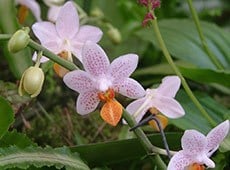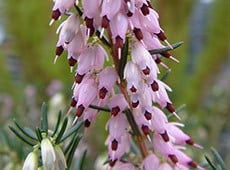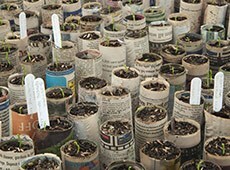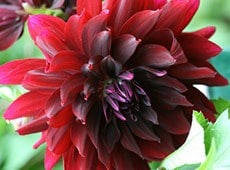Kitchen garden
- Protect brassicas such as broccoli, Brussels sprouts, cabbages and cauliflower from pigeons using cloches, netting or fleece
- Force rhubarb plants by covering the crown with a bucket. This will produce tender pink stems ready for eating in about 8 weeks time
- Harvest vegetables including parsnips, swede, sprouting broccoli, Brussels sprouts, leeks, celeriac, Jerusalem artichokes and turnips
- Remove about one-third of the oldest stems of blackcurrants close to ground level to encourage growth of new productive wood from the base.
Ornamental Gardens
- Deciduous hedges including hawthorn, blackthorn, beech or hornbeam can be planted now if weather permits
- Check for wind damage and secure climbers if necessary and make sure newly planted trees and tall vegetables such as Brussels sprouts are securely staked
- Move deciduous trees and shrubs in the wrong location or if they have outgrown their allotted space
- Plant colourful dogwoods for winter displays and Chimonanthus praecox, Mahonia, Viburnum × bodnantense and deciduous shrubby Lonicera for winter fragrance. Plant heather, especially Erica, for early spring flowers loved by bees
- Clear leaves from around the crowns of perennials and alpines vulnerable to rot in damp conditions under fallen leaves. Add leaves to compost bin for leaf mould
- Check that protective dry mulches and fleece over frost tender plants and containers have not been disturbed by winter weather
|
Glasshouse and indoor plants
- Cymbidium is an easy orchid to grow, preferring cooler conditions than some other indoor orchids. Provide winter temperatures between 10-14°C (50-57°F) and good light levels and water approximately every two weeks
- Control fungus gnat (sciarid flies) in houseplant compost with biological control or a pyrethrum spray (e.g. Py Spray Garden Insect Killer Spray, Vitax House Plant Pest Killer or Bug Clear Gun for Fruit & Veg)
- Sweet peas can be sown this month and those sown earlier in the autumn can now be potted on. Place them on a sunny windowsill, a cold frame or greenhouse with plenty of light.
Pests, disease and disorders
- Discourage grey mould (botrytis) from infecting greenhouse, conservatory or indoor plants by removing dead or dying plant material regularly and watering with care to avoid wetting foliage. Ventilate when possible
- Check for scale insects on citrus, mealybug and white fly on greenhouse and conservatory plants
- Place houseplants with brown leaf edges on a tray of moist gravel to increase humidity in often dry, heated rooms
- Now is a good time to check through garden chemicals. Dispose of unwanted or out-of-date pesticides by taking them to a manned local authority household waste site where they should be handed over to the staff. Waste disposal sites see www.pan-uk.org/waste-pesticides/pesticides-disposal






